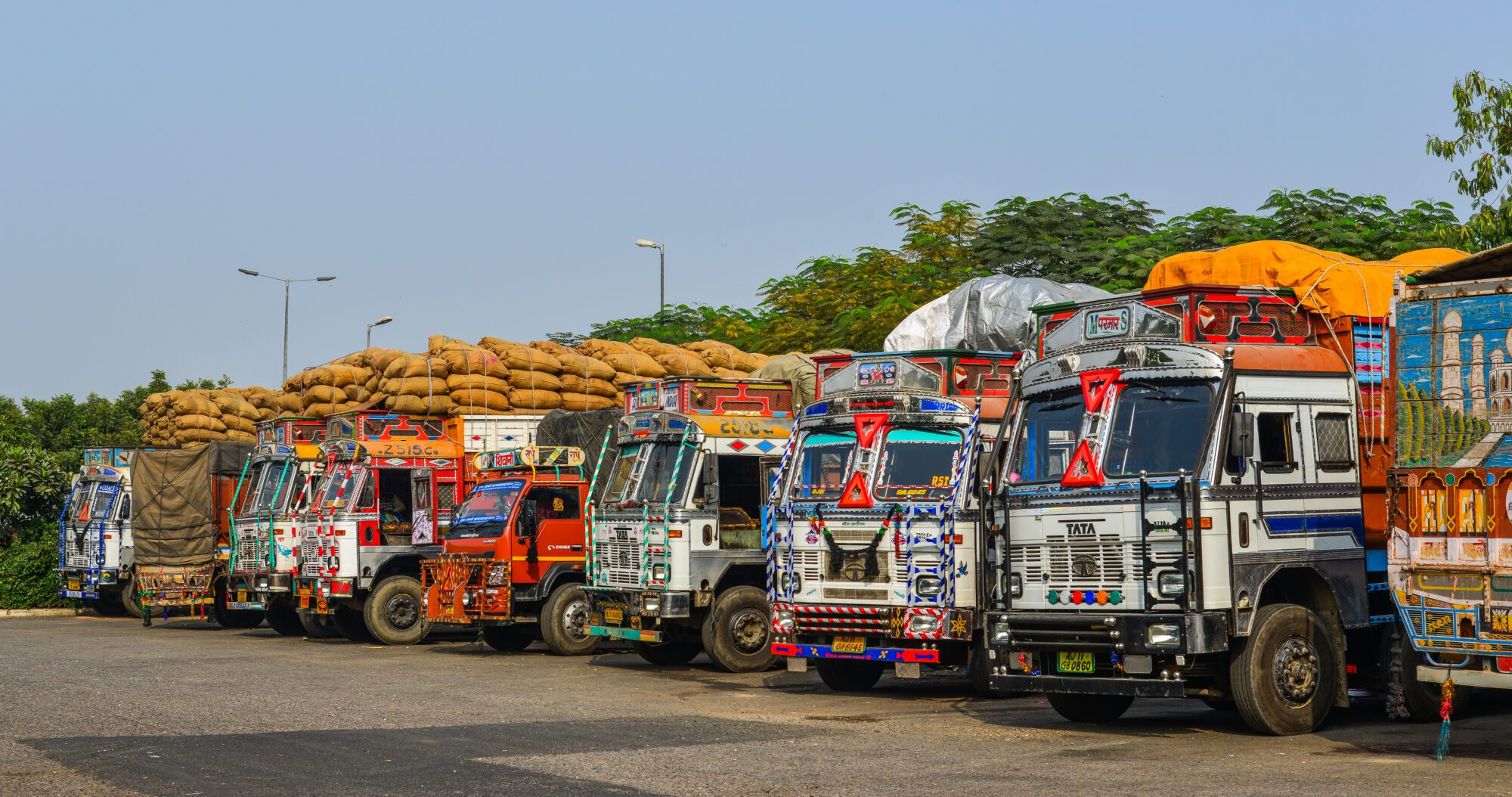Lost in transit: Opportunities to remove public data roadblocks in Indian trucking

Today India has about 4 million[1] trucks on the road and these carry about 70% of the country’s domestic freight[2]. With the freight activity of trucks projected to grow[3] by more than two times by 2050 and trucks already responsible for about half the well-to-wheel CO2 emissions[4] from on-road transport, adopting zero-emission technologies such as battery electric and fuel-cell electric trucks is critical to decarbonizing the transport sector and achieving India’s climate goals.
But a successful transition to zero-emission trucks will require extensive data, including about truck travel patterns and operations. In India, the data that’s currently available to the public has gaps and is not in a form that’s useful for researchers and policymakers. Fortunately, there are several ways to begin to fill these gaps.
It’s not difficult to see where the data challenges come from. For one, trucking in India is largely unorganized: 80% of the operators[5] have small fleets of fewer than 10 trucks. Beyond the sheer multiplicity of truck operators, small operators tend not to log data about their operations like larger fleets do. For another, there is limited data published by the national government. The Ministry of Road Transport and Highways (MoRTH) maintains the national register of vehicles registered by regional transport offices and it provides up-to-date information on the registration of different types of vehicles disaggregated by fuel type, vehicle classes, and region of registration. MoRTH also publishes an annual road transport yearbook[6] that reports national-level freight activity in tonne-km estimated as a function of gross domestic product, but researchers[7] find that these estimates are significantly overestimated. Furthermore, data on the age of vehicles, annual vehicle activity, load factor, and energy consumption is scarce. This results in a wide range of baseline energy consumption[8] estimates and projections[9] for India’s truck fleet.
International examples offer ways to improve. The European Union implemented a regulation[10] in 2012 that mandates the collection of various data on road freight transport through regular surveys[11] about fleet operators, their operations, and goods transported. In addition, the EU-funded European Transport Policy Information System (ETISplus) project consolidated various datasets into a new reference dataset of road freight transport at various levels: major socio-economic region (NUTS1), states (NUTS2), and district or county (NUTS3). This was instrumental in estimating truck movement[12] on the European highway network and developing recommendations[13] for electric vehicle charging infrastructure deployment targets in the European Union for 2030.
Similarly, in the United States, highway statistics compiled by the Federal Highway Authority contain annual average daily traffic count at different road sections from state transport agencies through the Highway Performance Monitoring System (HPMS[14]), which uses equipment[15] such as loop detectors and laser sensors. This dataset has supported research[16] on county-level zero-emission truck charging and highway hydrogen refueling needs.
With these in mind, here are some opportunities that we see for India. First, there are more than 1,000 toll plazas[17] on national and state highways that already use FASTag, a Radio Frequency Identification (RFID)-based electronic toll collection system that was launched in 2014. Additionally, the MoRTH is conducting pilots for an automatic number plate recognition system[18] and plans to introduce GPS-based toll collection[19] to replace toll plazas in the long term. Toll tax collection regularly captures data on daily traffic disaggregated by different vehicle segments. The National Highway Authority of India (NHAI), under the MoRTH, is responsible for developing, managing, and maintaining national highways, and this data could potentially be captured and processed by the NHAI or an expert agency to estimate traffic counts disaggregated by vehicle types at different road sections and at different times of the day. The NHAI or MoRTH could then publish and maintain this dataset in the public domain. Figure 1 shows what the data flow process could look like.
References
- ^ 4 million (www.niti.gov.in)
- ^ 70% of the country’s domestic freight (www.niti.gov.in)
- ^ projected to grow (theicct.org)
- ^ about half the well-to-wheel CO2 emissions (theicct.org)
- ^ 80% of the operators (shaktifoundation.in)
- ^ annual road transport yearbook (morth.nic.in)
- ^ researchers (www.ceew.in)
- ^ baseline energy consumption (www.sciencedirect.com)
- ^ projections (theicct.org)
- ^ a regulation (eur-lex.europa.eu)
- ^ regular surveys (ec.europa.eu)
- ^ estimating truck movement (www.sciencedirect.com)
- ^ recommendations (theicct.org)
- ^ HPMS (www.fhwa.dot.gov)
- ^ equipment (www.fhwa.dot.gov)
- ^ research (theicct.org)
- ^ more than 1,000 toll plazas (pib.gov.in)
- ^ automatic number plate recognition system (pib.gov.in)
- ^ GPS-based toll collection (pib.gov.in)